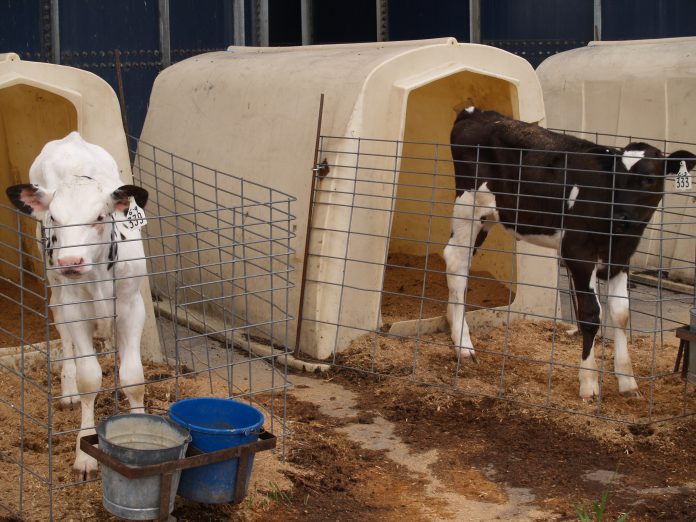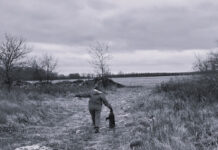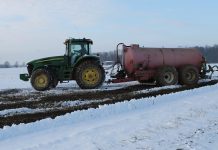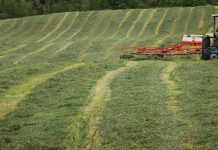Pasteurization has been used for over 100 years as a tool to decrease bacteria levels in raw milk and keep consumers of milk safe. More recently, pasteurization has also been adopted as part of many calf-feeding programs to reduce bacteria levels in milk and the transmission of diseases like Johne’s disease and bovine leukosis virus.
On many farms, colostrum is not pasteurized. Instead, the dam is milked and that milk is fed directly to its calf within two hours of birth. The recommendation to not pasteurize colostrum came from over 20-year-old research that showed that colostrum pasteurization reduced IgG levels. However, newer research has looked at different temperature-time combinations and is showing value in the heat treatment of colostrum.
Bacteria in colostrum can come from many sources, but the outside of teats is the most common. Dry pen manure can be stuck on teats and is hard to clean off. However, making sure teats are clean through good hygiene practices is a critical first step.
An occasional random sampling of colostrum bacterial counts before feeding to calves is the next step to determining if the calf’s first colostrum meal may also be a dose of bacteria. When sampling for bacteria levels in colostrum, be sure to use a sterile milk vial right before feeding the colostrum to the calves. If the sample has to be shipped to a lab, it is best to sample on a Monday or Tuesday to be sure samples do sit at the lab over the weekend. Any bacteria that is present in these samples will continue to multiply over time.
Besides good udder hygiene, colostrum heat treatment can be used to reduce bacteria levels, and if done correctly, multiple studies have shown that IgG absorption increases. For colostrum heat treatment, it should be heated to 140 degrees F for 30 minutes, unless high bacteria levels are present, then heating it to 140 degrees for 60 minutes will be more reliable for killing harmful bacteria. The longer time can reduce IgG levels.
The pasteurization process for colostrum needs to include uniform heating so that the temperature does not exceed 140 degrees in any portion of the colostrum. Higher temperatures can coagulate proteins, making the milk thicker and reducing IgG levels, while not full pasteurization heat treatment of colostrum significantly reduces bacteria levels. E coli counts often decrease to 0 with Total plate counts being reduced 50% and total coliform counts reduced by 90%.
One study from Minnesota and two from Penn State have shown that proper heat treatment of colostrum increases the absorption efficiency by 3-6% points, with the blood IgG levels staying higher for the first five weeks of the calf’s life. High bacteria levels not only increase the risk of calves becoming sick within the first week of life, but also have been shown to decrease the efficiency of IgG absorption.
While the goal with raw colostrum is to feed the dam’s milk to her calf, this is often not practical with pasteurized colostrum. Instead, the colostrum will need to be stored in either a refrigerator or freezer after heat treatment, and the calf will be fed milk from a different dam. This colostrum still contains antibodies that are specific to the organisms found on the farm that will be passed on to the calf. Pasteurizing colostrum can also make it easier to manage colostrum quality and feed the highest quality colostrum possible within two hours.
Pasteurized colostrum should be refrigerated for a day at a temperature below 39 degrees F. Longer-term storage should be done using a freezer. Once colostrum has been heated or cooled, the risk of additional bacterial growth is higher than fresh colostrum. Storing fresh colostrum at 70 degrees or at 39 degrees did not show a difference in bacterial growth over eight hours but storing at a temperature above 71 degrees over that same eight hours showed a significant increase in bacterial growth. However, colostrum with high initial bacteria levels might perform differently than this study.
Caution needs to be taken when rewarming colostrum to not get portions of the colostrum too hot. The best way to thaw or warm colostrum is in a water bath whose temperature does not exceed 104 degrees. One freeze-thaw cycle does not lower IgG concentrations, but multiple freeze-thaw cycles may lower concentrations by 7%. While microwave thawing may be more time efficient, it is not a good way to thaw milk due to its reduction in IgG concentration levels. A 200-watt microwave reduced levels by 20%, and 350 watts reduced them by 31%. Many studies have shown that decreasing bacteria levels in colostrum leads to healthier calves who consume more starter and are larger at weaning.













